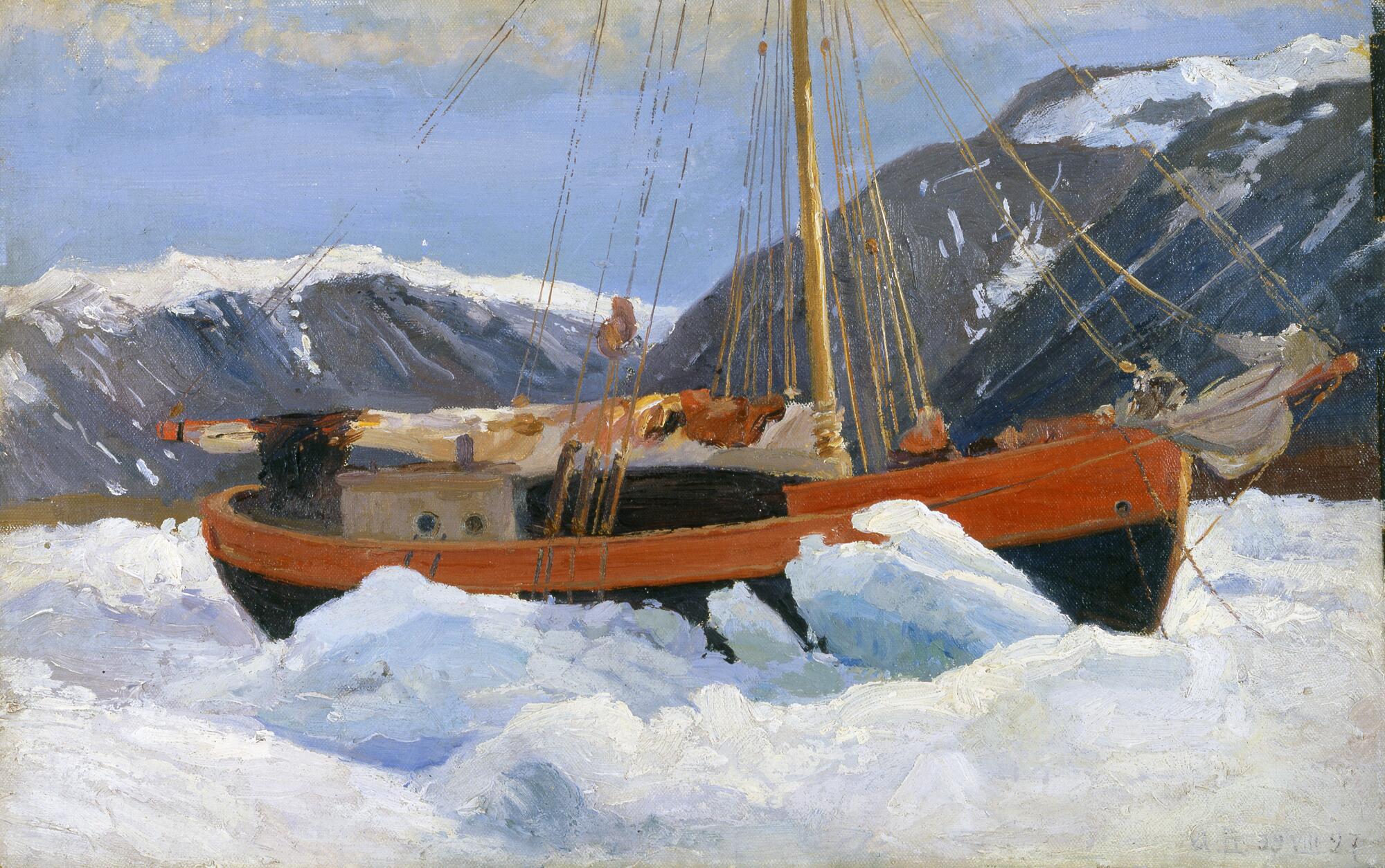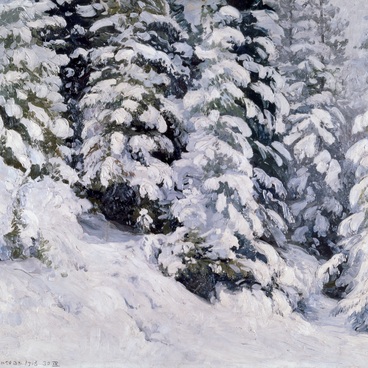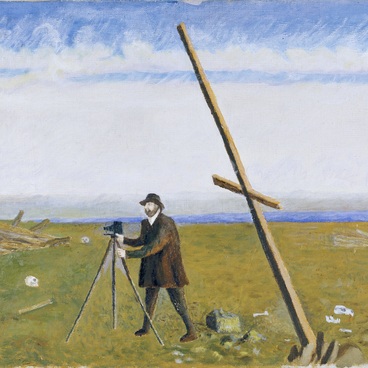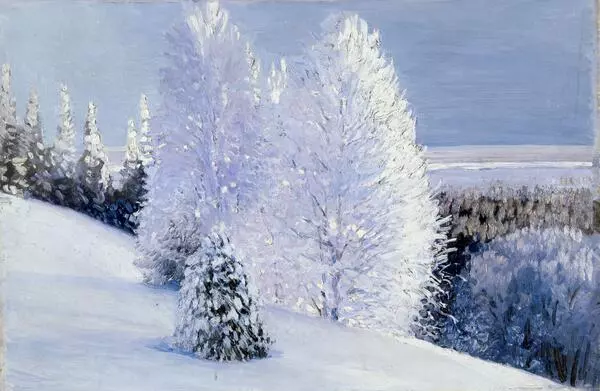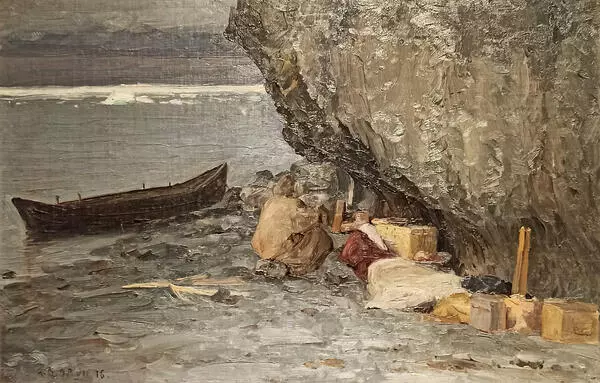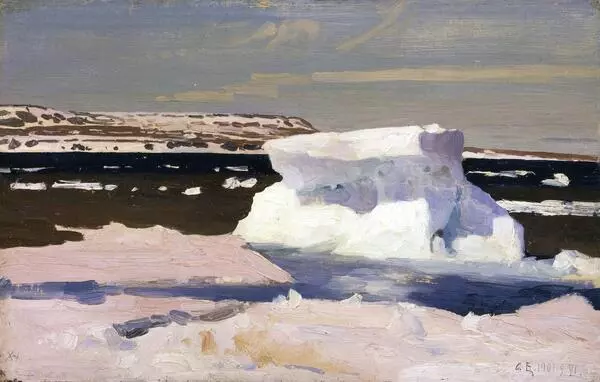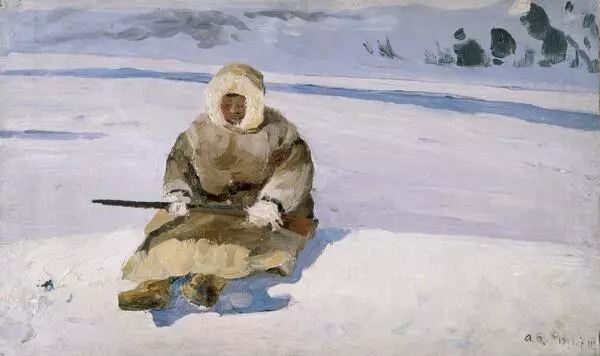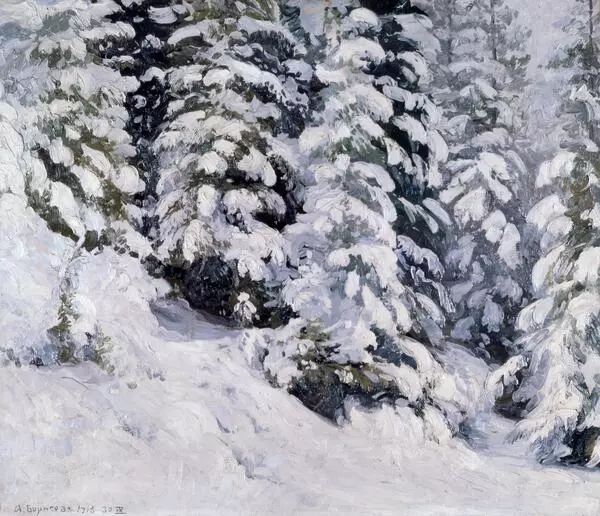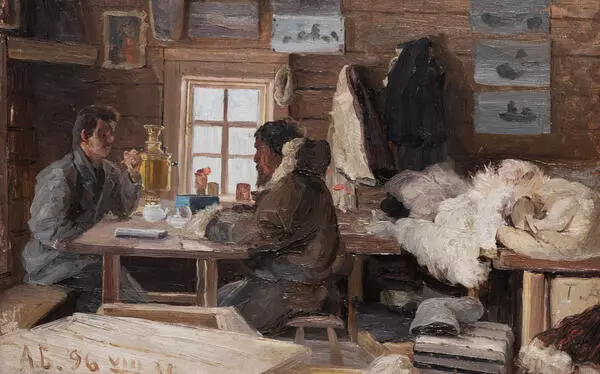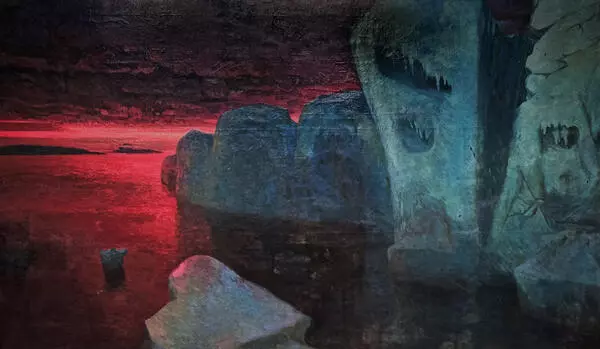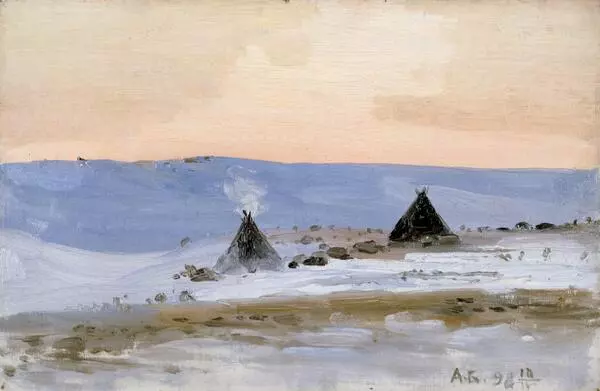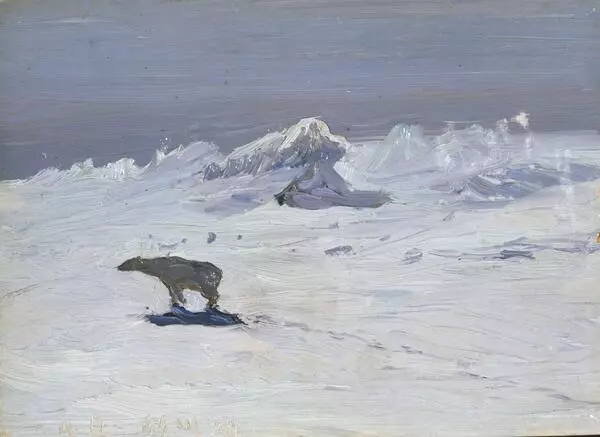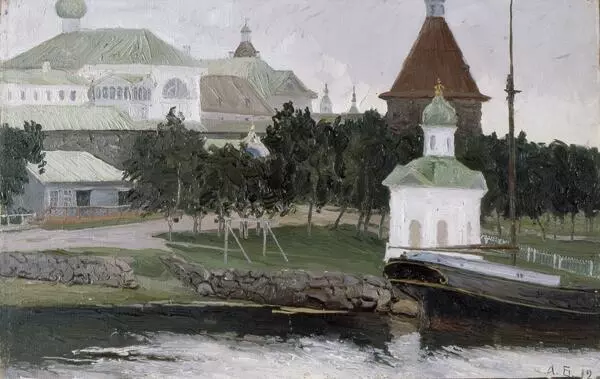One of the most ambitious endeavours of Alexander Borisov was construction of a boat.
The yacht was designed by the St. Petersburg’s engineer Alexander Petrovich Fan-der-Flit. Borisov kept a close eye on the construction, naming the boat Mechta (“Dream”). The meaning of this poetic name is quite obvious: it was the artist’s dream to visit the Arctic and capture its beauty in his pictures.
Mechta proved to be an excellent vessel: ‘When we entered the middle of the strait, the wind died down, the sails hung limply, the boat started twirling in the current that is quite strong during the tide. Because of that, dangerous whirlpools occur, up to four meters wide and up to one and half meters deep. If a rowboat moves too close to such a whirlpool, it will inevitably be sucked up by the water. However, Mechta, a forty-tonner, was in no danger.’
In the summer of 1899, Borisov’s dream of his own Arctic expedition came to life: he sailed to the Matochkin Strait on his boat. There, he was planning to build a house and get an overview of the land. The artist himself took on the duties of a captain. He admired his creation: “I can”t praise my Mechta enough. Sometimes I walk on the deck, head down, immersed in my dreams. Suddenly, a high-pitched cry of the watchman comes: Look out! I look up, and for a moment, my heart stops beating, my throat squeezes shut, my blood runs cold, as a terrible mountain of water moves towards us, ready to swallow our little walnut-shell. But then, how joyful, how easy it feels, when the dreadful wave slips under the boat, while Mechta keeps riding the tide.”
During the second expedition to Novaya Zemlya, Mechta was lost in the ice. As a tribute to the boat, Borisov gave its name to a cape and a bay in Novaya Zemlya.
The yacht was designed by the St. Petersburg’s engineer Alexander Petrovich Fan-der-Flit. Borisov kept a close eye on the construction, naming the boat Mechta (“Dream”). The meaning of this poetic name is quite obvious: it was the artist’s dream to visit the Arctic and capture its beauty in his pictures.
Mechta proved to be an excellent vessel: ‘When we entered the middle of the strait, the wind died down, the sails hung limply, the boat started twirling in the current that is quite strong during the tide. Because of that, dangerous whirlpools occur, up to four meters wide and up to one and half meters deep. If a rowboat moves too close to such a whirlpool, it will inevitably be sucked up by the water. However, Mechta, a forty-tonner, was in no danger.’
In the summer of 1899, Borisov’s dream of his own Arctic expedition came to life: he sailed to the Matochkin Strait on his boat. There, he was planning to build a house and get an overview of the land. The artist himself took on the duties of a captain. He admired his creation: “I can”t praise my Mechta enough. Sometimes I walk on the deck, head down, immersed in my dreams. Suddenly, a high-pitched cry of the watchman comes: Look out! I look up, and for a moment, my heart stops beating, my throat squeezes shut, my blood runs cold, as a terrible mountain of water moves towards us, ready to swallow our little walnut-shell. But then, how joyful, how easy it feels, when the dreadful wave slips under the boat, while Mechta keeps riding the tide.”
During the second expedition to Novaya Zemlya, Mechta was lost in the ice. As a tribute to the boat, Borisov gave its name to a cape and a bay in Novaya Zemlya.
